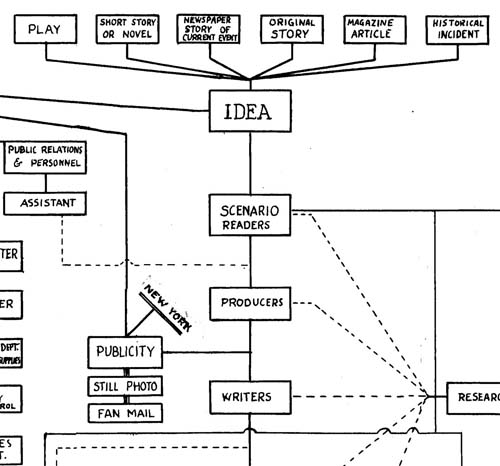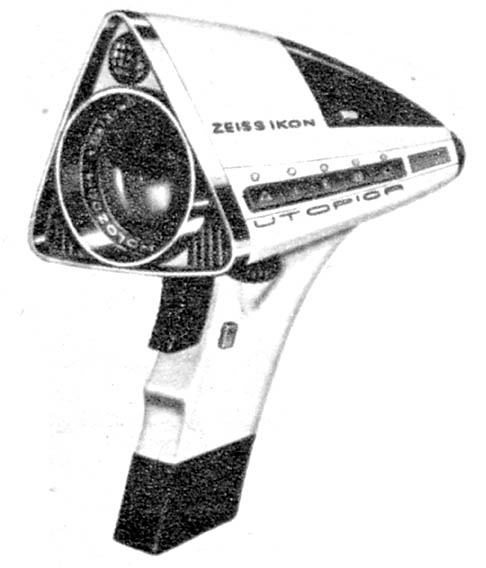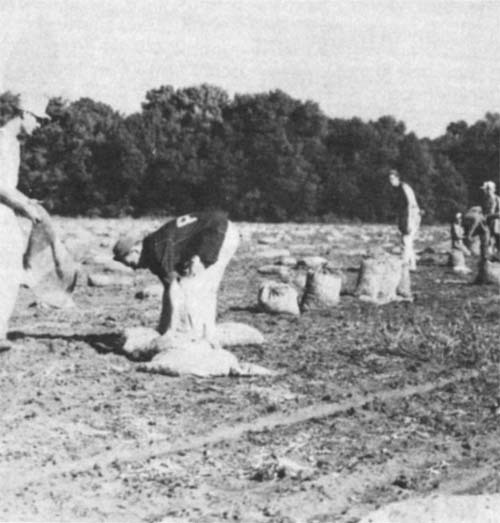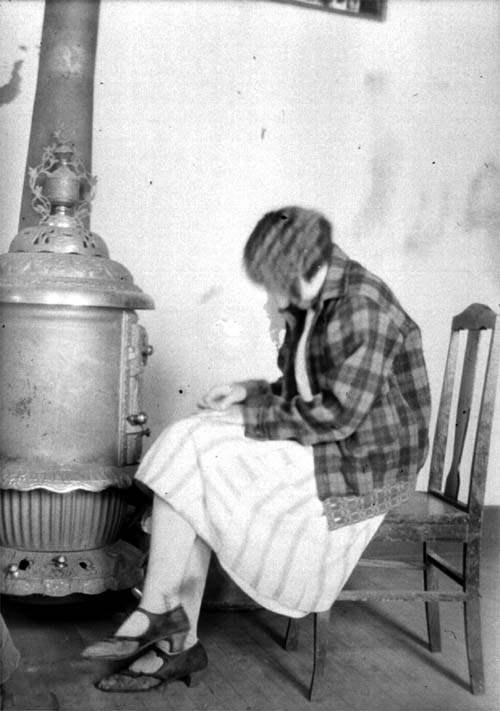 |

| |
|
|  |
IDEA, 1940s

Click for full image When producing a movie, everything stems back to this box: IDEA. In the 1940s, these were the sources of ideas: "Play," "Short Story or Novel," "Newspaper Story or Current Event," "Original Story," "Magazine Article," or "Historical Incident." Way off on the left, however, there's one additional source that's not shown above: "Vice President in Charge of Production." If you want something unoriginal done that isn't in print or in the history books, go talk to the VP, he'll get it done. On another note: this particular flowchart is one of the few places the words "Restaurants," "Mimeograph," "Arsenal," "Publicity," and "Bits & Extras" fit together so well. From the 20th Century Fox flowcharts collection. Labels: 1940s, 20th century fox
Camera for the Year 2000, 1968.

Click for more info In the late 1960s, Zeiss-Ikon designer Fritz Costabel was trying to wrap his brain around the Camera Of The Future. In an early 1968 issue of Photoguide Magazine, he described a machine capable of sending photos home wirelessly, radar auto-focusing, and push-button automation. A few months later, the camera above showed up in Mechanix Illustrated: the Zeiss-Ikon "Utopica". Looking a phaser sidearm off the Star Trek set, the camera was a multifunction machine: it could both instantly print photos like a Polaroid, but also make movies on 16mm film. The un-ergonomic shape and the focus on analog film were a bit short-sighted, but he was just about right on. Cameras today are automatic, double-duty as movie cameras, and can instantly produce a photo and allow it to be sent all over the world - and it certainly would have blown his mind to know that all of that photographic futurism is today considered an add-on to a portable telephone. Labels: 1960s, photography
German POWs in Minnesota, 1940s

Click for full image As World War II progressed, captured German soldiers were increasing in numbers, and the U.S. needed to do something with them. Numerous POWs were scattered throughout the country and used as labor. Algona, Iowa was the main POW camp in the United States, and several Germans were sent to Algona Branch Camp Number 1 — located in Clay County, Minnesota, just across the river from Fargo. Farm labor was scarce due to the number of men recruited for the military, so POWs helped in the cultivation and harvesting of the crops. This was not a forced labor program; the German soldiers were paid for their work. The above photo was taken at on the Paul Horn farm; Horn was chosen to take POWs because of his position on Clay County's Farm Labor Advisory Board, and the fact he spoke German fluently. From an article in the 8/78 Binford's Guide. Labels: 1940s, Germany, POW, WWII
|  |
|
|














